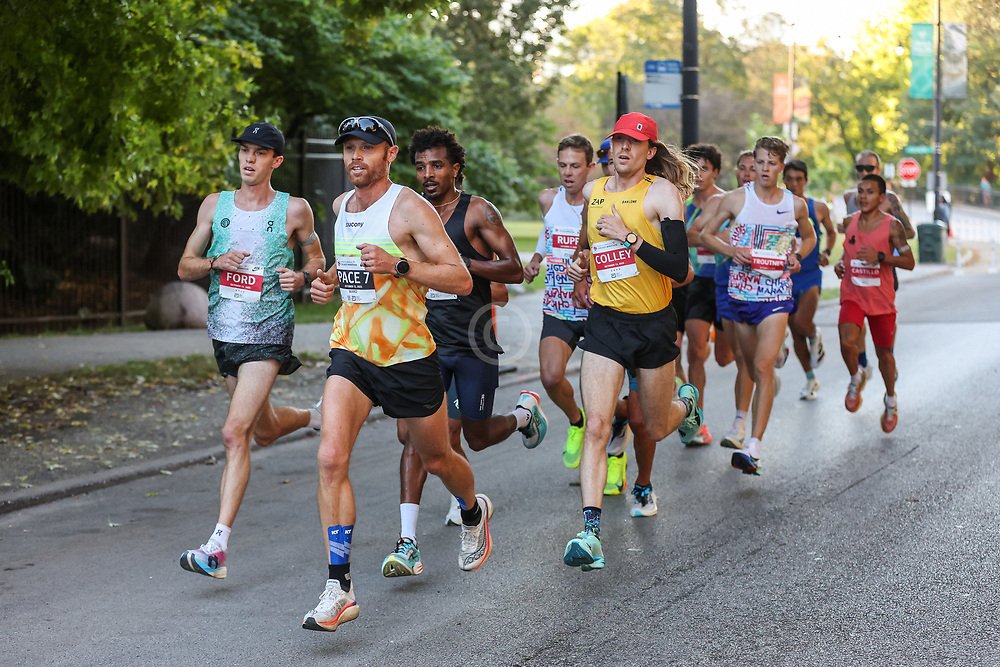In early 2028, several hundred of the best runners in the United States will compete in the US Olympic Team Trials Marathon. Meeting this OTQ standard is a lofty goal – one that only the most talented and committed runners can strive for.
In recent years, it has also become more difficult to achieve. After both the 2020 and 2024 Olympics, the USOTQ standard was revised. Runners have from September 1, 2025 until late 2027 to notch a qualifying time – 2:16 for men and 2:37 for women.
The tracker uses recent race results to identify runners who have met the current standards. It also includes historical data from the last two qualifying periods for comparison and analysis. New results will be incorporated on a weekly basis if and when new runners qualify.
The number in parentheses for men in the 2028 qualifying period represents the number of men who would have met the old standard (2:18) but did not meet the new standard (2:16).
For updates, subscribe to my weekly newsletter or follow me on Threads.

How Have the USOTQ Standards Changed?
The standards for the 2020 US Olympic Team Trials Marathon were 2:19 for men and 2:45 for women. In addition, runners could also qualify with a 1:04 / 1:13 in the half marathon.
While these standards generated a typical field size for the men’s race, it resulted in a very large field for the women’s race. About 500 women qualified, resulting in a crowded field.
The standards were revised down for the 2024 qualifying period. Men now needed a 2:18 and women needed a 2:37. The half marathon qualifying times were revised down to 1:03 / 1:12.
The more drastic change was to the women’s qualifying time, and this significantly reduced the size of the qualifying field. Just over 200 men qualified, while only about 150 women qualified.
Given the size of the women’s field in 2024, their standard remained unchanged going into the new qualifying period. However, the men’s time was revised down again – this time to 2:16. The half marathon standard remains 1:03.
How Have the Qualifying Periods Changed?
Generally speaking, the qualifying period is about two years leading up to the team trials race. But the actual dates vary from year to year, and this impacts the number of chances that runners have to qualify.
In 2020, the qualifying period extended from September 1, 2017 to January 19, 2020. This meant that the fall 2017 season was included, and some of the biggest qualifying events take place in the fall (Chicago, Indianapolis). It also extended into late January, and the results of the 2020 Houston Marathon were eligible for qualification.
In 2024, the qualifying period was shorter. It started on January 1, 2022 and ended on December 5, 2023. This excluded the fall season in 2021 as well as the 2024 Houston Marathon. The final race in the qualifying period was the 2023 California International Marathon.
In 2028, the qualifying period is once again starting in September. The period opened on September 1, 2025. The end date is still to be determined, and it will be approximately 45-60 days before the actual team trials marathon – which is also yet to be determined.
Where Is the Data Coming From?
The historical data was sourced from USATF’s website. They maintained a list of qualifying performances for the 2024 team trials marathon here and the 2020 team trials marathon here. In some cases, the race names were revised to make them consistent from one year to the next. In the event that a runner’s name changed (i.e. Dakotah Lindwurm to Dakotah Popehn), their name in the historical results was changed to reflect their current name.
I regularly collect results from marathons to maintain the Boston Marathon Cutoff Time Tracker. As I collect those results and update that tracker, I will also identify runners who met the USOTQ and update the data source for this dashboard. This tracker will also include men who were within two minutes of the current standard (2:16 to 2:18), and I plan to update this later with additional results from each runner beyond their best qualifying time.
USATF also maintains a document with the official list of qualifiers here. I will periodically cross-check this list against my own records to ensure that I don’t miss any results from international races – which I don’t check as frequently.
Curious About Something Else?
This tracker is a living document, and I plan to revise it over the course of the qualifying period. I already have a few plans to introduce some additional data (i.e. a full history of each runner’s times), but I’m open to other suggestions.
If you have a particular question related to the US Olympic Trials Qualifying Standards, please leave a comment below. I’ll do my best to answer it and/or find the data to incorporate it into this dashboard.